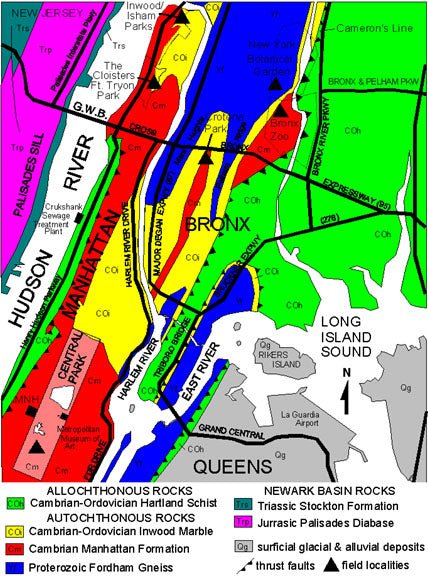Let's dive into the fascinating geologic history of New York City, a story that spans over a billion years. Imagine, if you will, a journey back in time, way before the bustling streets, the towering skyscrapers, and the iconic landmarks we know today.
The Ancient Beginnings
Our story begins about 1.1 billion years ago. Back then, New York City's landscape was vastly different. The area was part of a vast mountain range, similar to the Himalayas today. These mountains were formed by the collision of ancient continents, a process that took millions of years. The bedrock that makes up much of the city today is the roots of these ancient mountains.
A Time of Transformation
Fast forward to around 500 to 400 million years ago, during the Taconic and Acadian orogenies. These were periods of intense geological activity, where the land was subjected to extreme heat and pressure. This process metamorphosed the existing sediments, transforming them into the metamorphic rocks we see in places like Central Park today.
Erosion and Ice Ages
Over millions of years, these mountains were gradually worn down by erosion. Rivers, wind, and weather chipped away at the rock, shaping the landscape. Then came the ice ages, the most recent of which ended about 12,000 years ago. Massive glaciers, some over a mile thick, covered the area. As they moved, these glaciers sculpted the land, carving out the valleys and depositing the sediments that would become Long Island and Staten Island.
The Modern Landscape
When the last ice age ended, the glaciers retreated, leaving behind a dramatically altered landscape. This new terrain included the harbor we know today, which was carved out by the glaciers. The Hudson River, a defining feature of modern New York City, was also shaped during this time.
A City Built on Rocks
The bedrock of New York City is not just a relic of the past; it has played a crucial role in the city's development. Manhattan, for instance, is built on a solid foundation of this ancient bedrock, which is why it can support such tall buildings. In contrast, the softer, sediment-based land in other parts of the city has dictated a different kind of urban development.
A Geological Mosaic
Today, when you walk through New York City, you're literally walking on history. From the schist in Central Park to the serpentine in Staten Island, the city is a mosaic of different rock types, each telling a story of the city's ancient past.
A Living Museum
For geology enthusiasts, New York City is like an open-air museum. You can see evidence of its geological history everywhere, from the exposed bedrock in Central Park to the layout of the streets, which often follows the underlying geological features.
So, the next time you're in New York City, take a moment to appreciate the ground beneath your feet. It's not just pavement and urban sprawl; it's a record of over a billion years of Earth's history, a testament to the dynamic and ever-changing planet we call home.
Isn't it amazing to think about how the bustling metropolis we see today has such ancient and natural roots? It's like the city is a living link between the past and the present, a place where history is etched in stone, quite literally!



Share:
Annular Eclipses Explained
Solar Eclipses Through Time